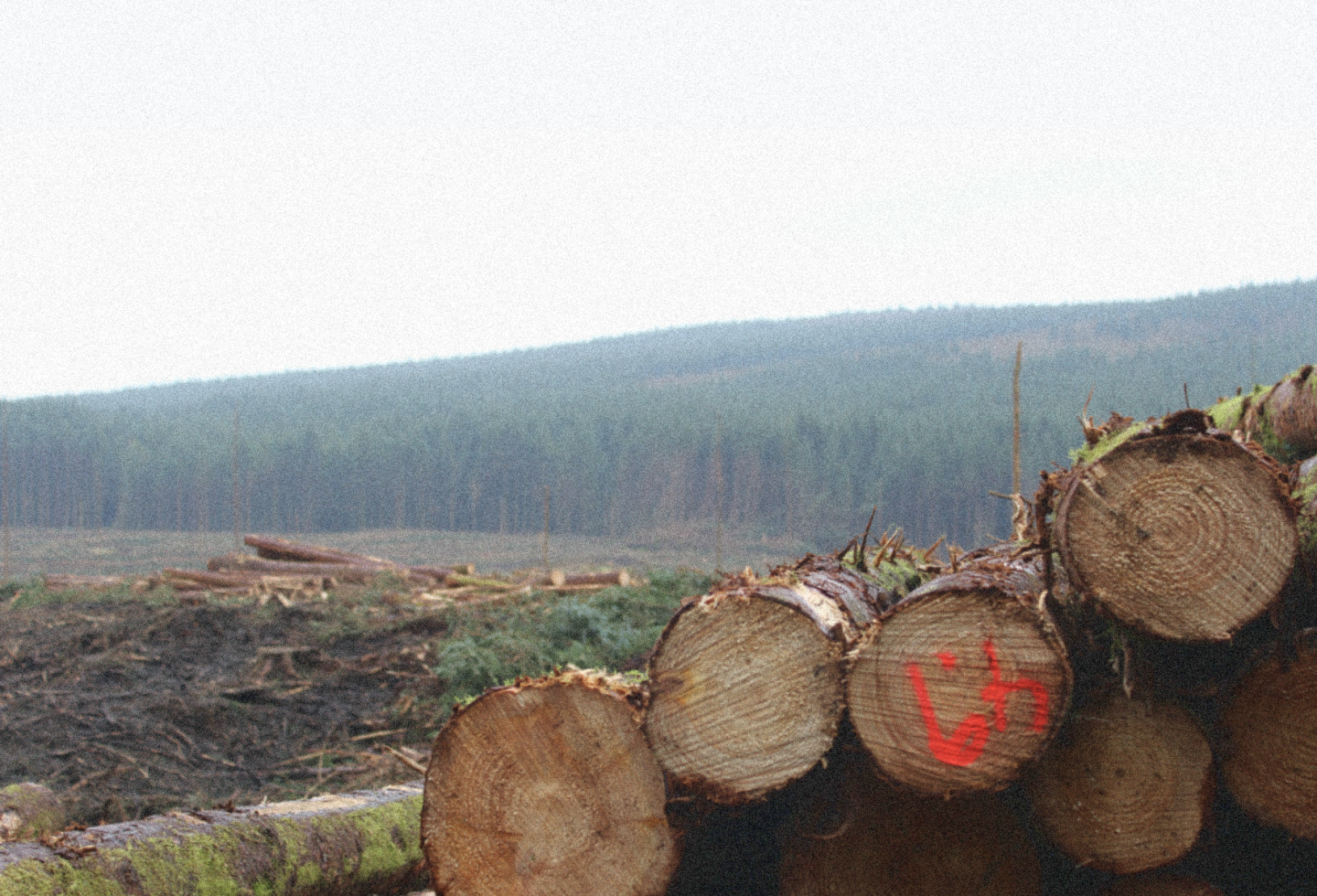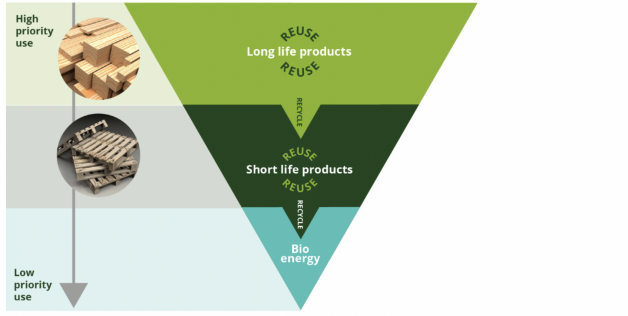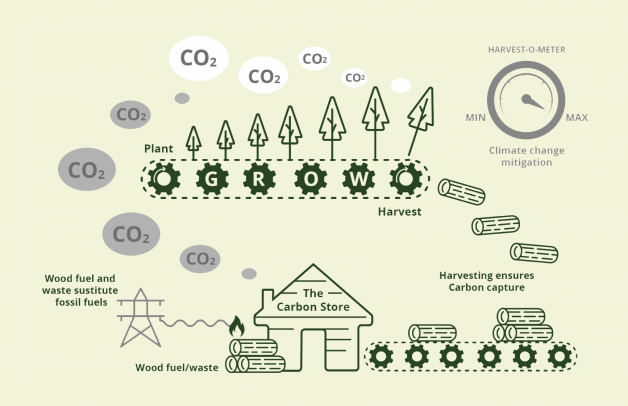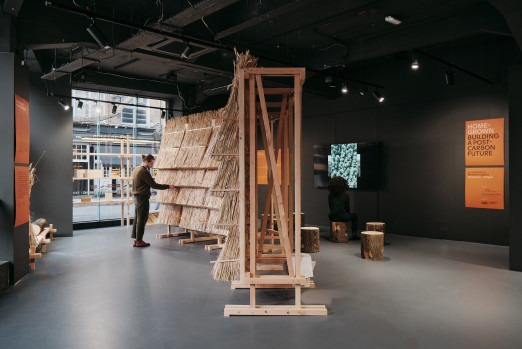Expanding commercial conifer forestry is the most efficient strategy for achieving climate change mitigation through woodland creation, according to a new study[1] (published in Nature Communications).
The ground-breaking research led by Bangor University, applied dynamic life cycle assessment to the UK’s national planting strategy of 30,000 ha yr-1 from 2020-2050. A total of 33 different future scenarios were modelled, representing current land use choices relating to three key forest management objectives: biodiversity conservation, carbon sequestration and sustained timber yield.
An essential feature of the research, which is one of the first and most rigorous studies of its kind worldwide, is the inclusion of the carbon flows in the whole system: soil, trees, forestry operations and harvested wood product value chain. The contribution of woodland creation to climate change mitigation will be maximised if the harvested wood is utilized in long-life span structural materials, with the added benefit of avoiding carbon emissions by substituting construction materials with a large carbon footprint. Prioritising wood products with long service lives also ‘buys time’, delaying final use for bioenergy until carbon capture and storage (BECCS) technology is widely deployed, leading to carbon being locked up indefinitely.
Results counter recent studies[2] that suggest commercial forests act only as a short-term sink of carbon and strongly counter existing opinion that decarbonisation is best served by planting native broadleaves or re-wilding. The study found UK new commercial conifer forests could deliver 269% more climate mitigation than new semi-natural broadleaf forests by 2120, sequestering 0.5 to 1.7 billion kg of carbon (i.e. carbon dioxide equivalent, CO2e) by 2120, if the UK proposed planting rate is implemented. This roughly equates to 14 billion fewer kilometres being driven over this period.
Rapid reduction and offsetting of carbon emissions are urgently needed if we are to stop climate change. Expansion of sustainable forestry is widely seen as a key carbon offsetting strategy, as well as providing a source of renewable material that can reduce our dependency on fossil fuels. However, until now, little has been known about the comparative climate change mitigation potential of different types of sustainable forest systems in temperate regions.
The findings of this study provide important new evidence at a critical juncture in land-use policy-making and could significantly boost the contribution of forestry and wood towards meeting net zero[3] carbon targets.
Sustainable forestry
Sustainable forestry[4] often implies the blended delivery of a suite of ecosystem services, including habitat provisioning, nutrient cycling, carbon sequestration and timber yield. In practice, though, forests are normally managed to prioritise one or two of these services, which generally reduces the provision of the others. Broadleaf forests of native species in the UK can support high biodiversity but achieve low carbon sequestration rates and timber yields in the kind of infertile upland sites of low value for agriculture, which is the land most economically available for woodland creation. In contrast, for these kinds of sites, whilst conifer-rich commercial forests may support lower (not necessarily low[5]) levels of biodiversity, they can achieve much higher carbon sequestration rates and timber yield. There is no ‘one forest type fits all’ and the best solution for delivering the range of ecosystem services that society needs is likely a portfolio of different forest types across the landscape.
Carbon
Forests sequester CO2 from the atmosphere through photosynthesis – offsetting GHG emissions. Different trees grow and sequester carbon at different rates. Unharvested forest systems build up a carbon stock that then plateaus as the forest reaches maturity. Harvesting and wood use alter this balance. Harvesting reduces carbon storage in the forest (due to losses from soil disturbance, decay of brash and wood removal) but can lead to carbon storage in harvested wood products. In addition, it can reduce emissions by using wood as a substitute for materials whose manufacture generates a high rate of carbon emissions, and for fossil fuels. The carbon dynamics of forestry value chains are complex and highly context specific and hence require careful assessment.
Life cycle assessment
Life-cycle assessment [6] is the most rigorous method for determining the true impact of different land use and product options on storing carbon and therefore reducing climate change. The principle of life-cycle assessment is to consider the direct and indirect impacts of a product or system through its entire life. We calculated the net carbon (carbon dioxide equivalent, CO2e) emissions, known as Global Warming Potential[7] impact, for the establishment, management and growth of a forest, and for the carbon emissions from the processing, use and disposal of harvested wood. We also calculated the carbon emissions avoided due to using the wood as a substitute for mineral-based construction products (i.e. concrete and steel) and fossil fuels.
Hierarchical wood use
Hierarchical use of wood is important because it leads to carbon being locked-up out of the atmosphere for longer. Wood is subject to a cascade of uses, and as each product reaches the end of its use the material is put to another use in a prioritised order: durable wood product manufacturing, re-use, recycling, bioenergy generation, and disposal. In this study[1], two key wood use strategies were considered, one prioritising hierarchical use and one with emphasis on bioenergy production (65% of primary wood harvest is used for bioenergy). Uniquely, the effects of industrial decarbonisation over the 100-year study period (i.e. staged deployment of carbon capture and storage technology, CCS[8], according to UK Committee on Climate Change projections[3]) were also considered.
Mitigation potential
The findings of the study reveal that species choice is the overriding factor impacting the climate change mitigation potential of afforestation through the proposed national woodland creation strategy, regardless of whether harvesting is carried out. Unsurprisingly, unharvested conifer systems outperform unharvested broadleaves, due to faster growth and hence faster carbon sequestration rates. However, we also found that, in the long term, commercially harvested conifer systems outperform unharvested conifer systems. This suggests that there are net benefits to harvesting and using wood. Hierarchical wood use is important to maximise this benefit, and to ensure efficient and sustainable use of this natural resource. From a carbon perspective, harvesting was found to enhance mitigation in both the hierarchical and bioenergy wood use scenarios. This result was independent of the rate of decarbonisation of the wider economy.
Furthermore, results suggest that, beyond the 100-year time frame considered in this study, harvested conifer systems will achieve increasingly greater mitigation than the non-harvested conifer systems. This is based on the assumption that the UK achieves a national planting rate of 30,000 ha yr-1 from 2020 to 2050 with trees harvested and processed in a hierarchical wood use scenario storing carbon in the built environment (~140 Tg of wood dry matter at the end of the studied time horizon) as well as biomass and cascaded products reaching their final use entering the growing BECCS (bioenergy with carbon capture and storage) pool and hence no longer being released back into the atmosphere at their end of life.
The urgency of woodland creation becomes highly evident, as results show that less than 15% of the 100 year mitigation potential will be achieved by 2050, a key date for net zero carbon targets. A forest planted today will achieve 20% more mitigation by 2050 than one planted in 5 years’ time. Decisions relating to harvesting strategy must not delay planting since managers can make these in response to market conditions nearer the time of potential harvesting.
Climate and biodiversity
The findings of this study do not intend to undermine the importance of the biodiversity and other ecosystem services delivered by different woodland types and management regimes, nor do they imply that climate change mitigation is always the most important service. However, they do clearly demonstrate that, when climate change mitigation is the primary objective, commercial conifer systems with hierarchical wood use can offer the greatest mitigation potential.
As pointed out previously: There is no ‘one forest type fits all’. In order to deliver the range of ecosystem services that our global societies and planet need to thrive, we have to invest into a portfolio of different forest types across the landscape.
References
1. Forster, E. J., Healey, J. R., Dymond, C. & Styles, D. Commercial afforestation can deliver effective climate change mitigation under multiple decarbonisation pathways. Nature Communications. DOI 10.1038/s41467-021-24084-x (2021). http://www.nature.com/ncomms.
2. Lewis, S. L., Wheeler, C. E., Mitchard, E. T. A. & Koch, A. Restoring natural forests is the best way to remove atmospheric carbon. Nature 568, 25–28 (2019).
3. UK CCC. Net Zero: The UK’s contribution to stopping global warming. https://www.theccc.org.uk/wp-content/uploads/2019/05/Net-Zero-The-UKs-contribution-to-stopping-global-warming.pdf (2019).
4. https://www.rainforest-alliance.org/articles/what-is-sustainable-forestry
6. Confor. Biodiversity, Forestry and Wood. https://www.confor.org.uk/media/247794/confor-biodiversity-forestry-report.pdf (2020)
6. https://en.wikipedia.org/wiki/Life-cycle_assessment
7. https://en.wikipedia.org/wiki/Global_warming_potential
8. https://en.wikipedia.org/wiki/Carbon_capture_and_storage




